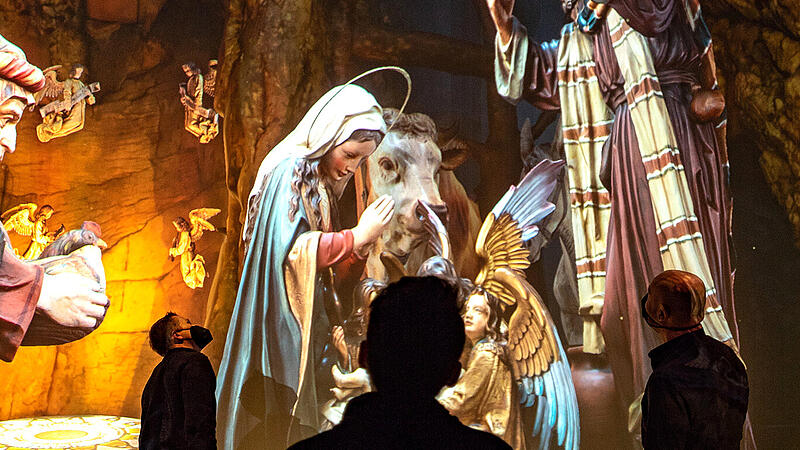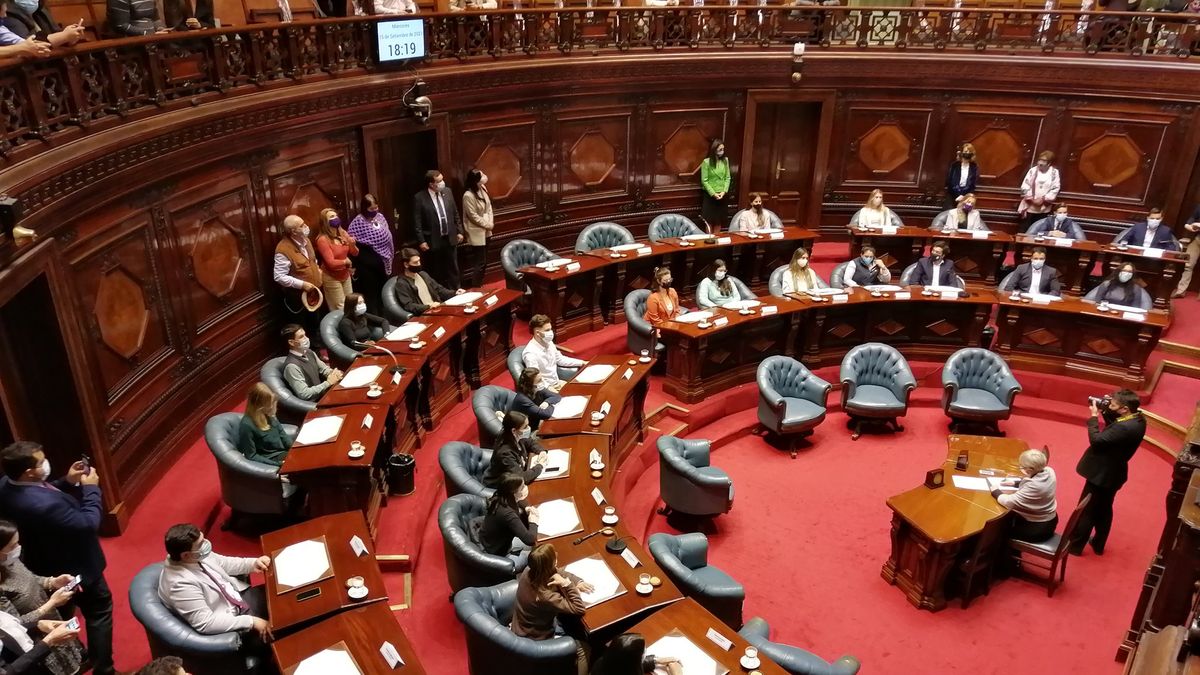The scene that every Christmas crib still shows today is a myth. The comet came too late to shine for the birth of Jesus Christ, astronomers calculated. The place of birth was – if not a completely normal house – a cave for livestock in Nazareth and not a stable in Bethlehem, historians write, and the three kings from the Orient were probably priests, astronomers or scholars – depending on the translation. But despite the profane disenchantment, the scene with the child, his parents and all kinds of companions has been handed down for centuries. People around the world locate them in their very local way – whether under a bark roof in the Salzkammergut, in a rush boat on Lake Titicaca or in the middle of a palisade village in Tanzania. “It is a human-clad Christmas message in their village, in their city”says the Innsbruck pastoral theologian Franz Weber. “Christmas is where we are, in everyday life, in folk art.”
But when and where did the story of the nativity scene begin? It’s hard to pin down. Because there are also myths about their origins.
For a long time Giovanni di Pietro di Bernardone was considered the father of all nativity scenes. The later Francis of Assisi is said to have reenacted the Christmas events with people and animals in Greccio in 1223 instead of a sermon. In doing so, however, he founded the nativity scene more than the figurative representation of the traditional events. Static nativity scenes also developed in Italy. The first written evidence of a nativity scene comes from 1478. It is a list of figures that were to be carved for the Church of San Giovanni a Carbonara in Naples. Some of the late Gothic figures are still preserved and can be seen in the Museo di San Martino in Naples.
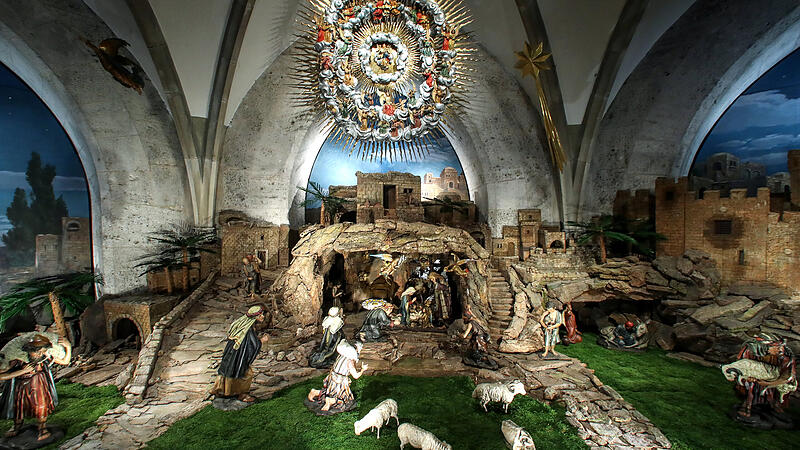

Deepening of faith
Obviously driven by the Reformation, the orders of the Jesuits, Servites and Franciscans in particular tried to deepen the knowledge of the life of Jesus through scenic representations in the population. And so one set up boxes with biblical representations in churches, which were soon taken up by the nobility. The first nativity scene north of the Alps is considered to be that of the main altar of the Jesuit Church of St. Clement in Prague from 1562. The figures are said to have been life-size and their representation – with musical accompaniment – very impressive, as the Catholic theologian Philippe de Berlaymont wrote in 1619: “The whole is arranged so skilfully that the viewer’s piety is most vividly aroused. You believe to be present at the wonderful event yourself, to hear the whimpering of the child and the heavenly music with your own ears, to feel the diaper with your own hands, and a shiver seizes you. “
The viewer may also get a little shiver when he approaches the newly restored nativity scene of the Mariendom in Linz – not in the crypt, where it is set up every year, but more recently in the Deep Space of the Ars Electronica Center. There you can – if the lockdown rules allow it again – stroll through the high-resolution landscape of the nativity scene builder Sebastian Osterrieder, who created it between 1908 and 1913. Thousands of photographs are the basis of the 3-D illusion, which can also be approached in the cathedral itself using VR glasses (www.krippeimdom.at).
Whether the renovation plus the expansion of the viewing area by a total of 300,000 euros reflects the value of a crib in the sense of a modern missionary idea, one may ask, however. On the other hand, it is not a matter of course everywhere in the world that the representation of a religious scene receives approval. In traditionally secular France, for example, in 2015 the Association of French Mayors advised in a guideline (bonne conduite laique) not to set up Christmas cribs in public buildings. The reaction of the Vatican took place a few years later in the apostolic letter “Admirabile signum” (wonderful sign), in which Pope Francis dealt with the tradition and meaning of the nativity scene. It says that the manger is implicitly an appeal to follow the Son of God “on the path of humility, poverty and alienation that leads from the manger in Bethlehem to the cross. It is a call to meet him in the brothers and sisters most in need and to serve with mercy ”.
And further: “Through the birth in the manger, God himself begins the only true revolution that gives hope and dignity to the disinherited and excluded: the revolution of love, the revolution of tenderness. From the manger, Jesus gently proclaims the call to share with the least as the way to a more humane and solidary world, in which no one is excluded and marginalized. “
For Veronika Prüller-Jagenteufel, theological advisor at Caritas in the diocese of St. Pölten, the philosophical idea is less important than the reality: “God becomes human, very concrete. With blood, slime and screaming ”, as she said in an ORF documentary. She suggested including today in the crib, for example adding a daily newspaper, with a crisis, with worries and also “with what is beautiful in the world”. Yes, and shepherdesses also belonged in the manger.
Further information: Austrian Association of Crib Friends:
krippe.at, ooe-landeskrippenverband.at
Guided tour of the manger of the Linz Mariendom via stream:
https://ars.electronica.art/homedelivery/de/deep-space-live-die-virtuelle-krippe-in-voller-pracht
“Coop_zweierlei” and their extraordinary crib
The Linz artist collective “coop_zweierlei” is currently working on its “Logos Nativity”. To do this, Ilona Ágnes Tömö and Thomas Schlager-Weidinger dismantled 15 typewriters.
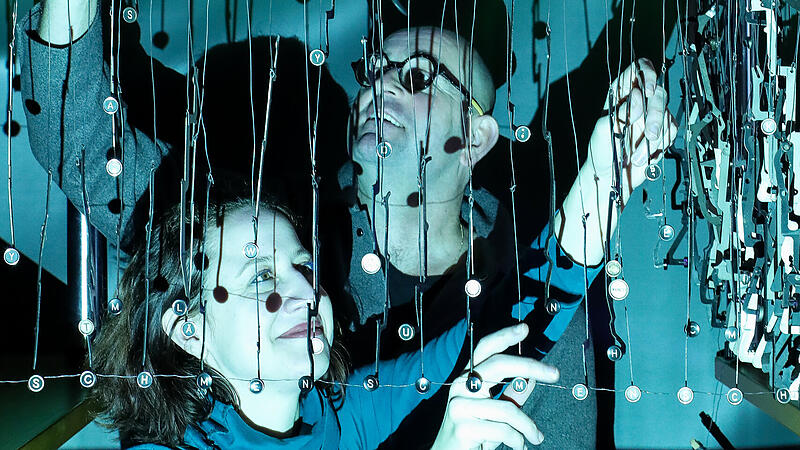

The guys hang from the ceiling and form words. In this respect it is logical that the artists do not lean on the Gospel of Luke, but on Joh 1,1: “In the beginning was the word.” The installation can be seen for the first time on December 18 at the “Haager Kripperlroas” in the parish hall Haag am Hausruck.
Drawn cribs for the online gallery
Manfred Scheuer, Diocesan Bishop of Linz, particularly encourages the children this year to take a closer look at the crib.
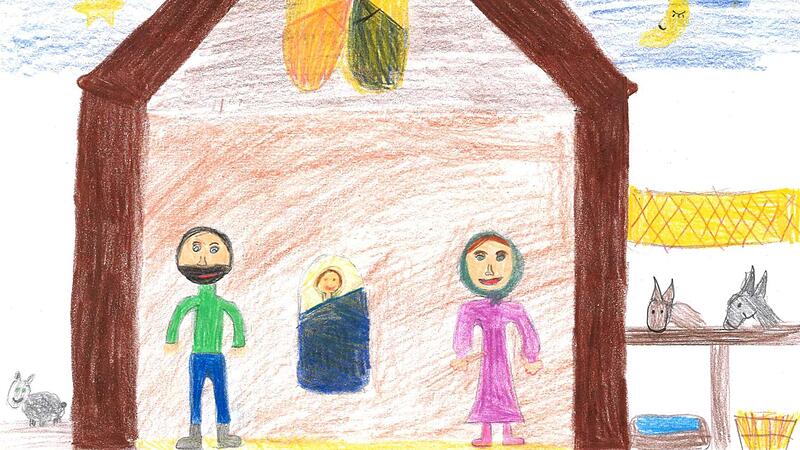

He invites them to send drawings from the crib. Katharina (9 years) has already done this. All children who send Bishop Scheuer a drawing and give their postal address will receive a reply letter from him. The images are also presented in an online gallery. The bishop looks forward to many mailings.
Address: Bishop Manfred Scheuer, Herrenstrasse 19, 4021 Linz, upload online at dioezese-linz.at/krippenupload
Source: Nachrichten

